Top 10 classic tractor buys for new enthusiasts
Posted by Chris Graham on 2nd July 2024
Jonathan Whitlam cuts through the confusion to spotlight – in no particular order – his top 10 classic tractor buys for new enthusiasts.
Buying your first tractor can be a bewildering business for the newcomer as there are so many models to choose from, a huge variety of specifications and all manner of shapes, sizes and colours. The purpose of this feature is to point first-timers towards machines that make sense for novice owners; that are easy to live with, simple to buy and interesting to own.
The prices included in each case are for guidance only as actual values can vary so much depending on condition, history, originality, restoration status etc. The aim is to inspire you to start doing your own research, to take action and to get involved with this wonderful hobby by becoming a classic tractor owner.
Ford Force 4000
The Force version of the Ford 4000 has got to be right up there as a first-timer’s top choice. It was the second incarnation of the 4000 and replaced the original in 1968. It featured several useful upgrades, making it more powerful, plus there was better reliability from its three-cylinder Ford engine.
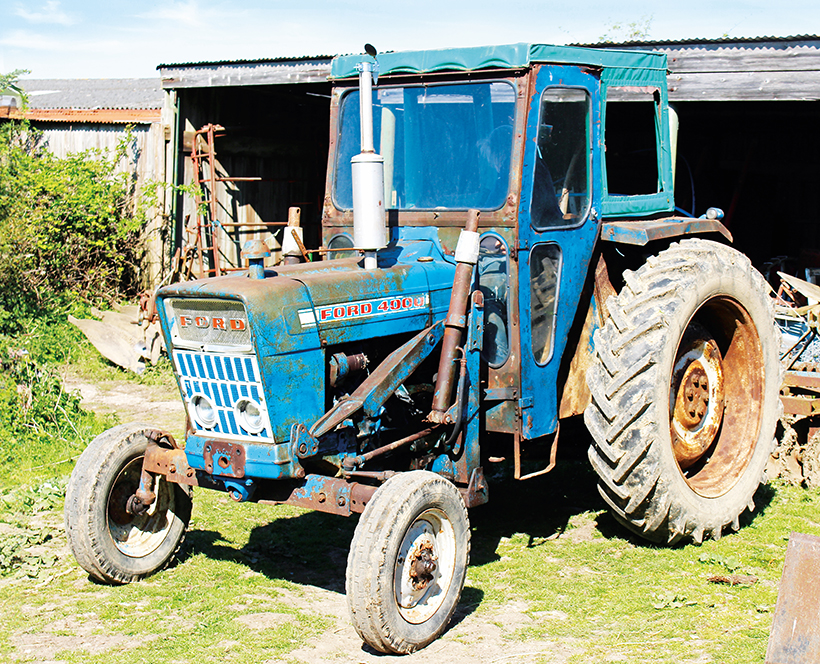
Top 10 classic tractor buys: The Force version of the Ford 4000 had sleeker lines than the earlier, Pre-Force version, and plenty of improvements under the bonnet. Originally, it came as an open platform tractor or with a Ford weather cab, but this one is fitted with an after-market cab built by Lambourn. From 1970, a Ford safety cab was fitted to meet new legislation and these are most desirable.
Sharing much with the other two three-cylinder models in the range – the 2000 and 3000 – the 4000 was a 62hp machine and more capable than its smaller brethren. Its popularity means there are plenty still in existence and spare parts are relatively easy to source.
The only major problem to be aware of relates to the notorious porous engine block issues that all Ford tractor engines from this era suffered from. Watch for signs of water in the oil, or vice versa.
Apart from this, though, this model is mechanically simple and most were fitted with a reliable eight-speed gearbox. The 10-speed Select-O-Speed powershift was a less common option and probably isn’t best suited to anyone new to classic tractors.
Ford 5610 Force II
The Ford Series 10 tractors were introduced in 1981, with the 5610 replacing the 5600 that had arrived in 1975. In 1985, the Force II incarnation appeared, although the 5610 remained the smallest four-cylinder tractor in the Ford range, with a power output of 72hp.
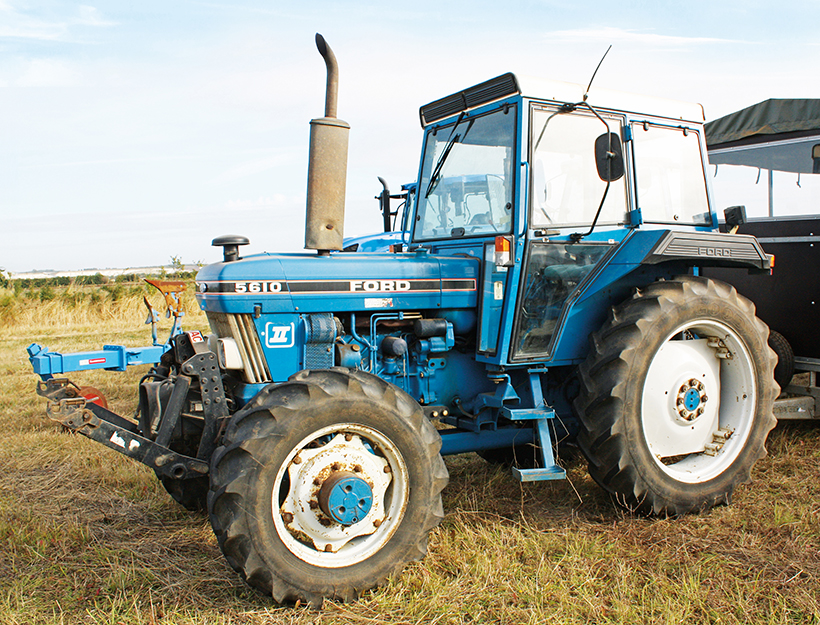
This is a superb example of a Ford 5610 Force II, with the AP cab rather than the top-of-the-range, flat-floored Super Q alternative. The 5610 was the entry-level four-cylinder model in the Series 10 range and, as such, makes the ideal starting point for a beginner wishing to own a tractor from this era.
Originally it was only offered with the cheaper LP and AP cabs produced by Sekura. But the desirable option of the luxurious Super Q cab soon appeared.
Some 5610s were fitted with the standard eight-speed transmission, but those fitted with the Dual Power 16-speed option are a better choice. The model tended to lead a hard and mucky working life, so finding intact, original examples can be difficult these days. Also note that Sekura cabs often seem more prone to rusting than the deluxe Super Q version.
This model can make a very good first tractor for someone looking for a classic, 1980s machine. As with other Ford tractors, though, beware of porous engine block issues which still persisted, despite the switch to a new, ribbed engine block.
Fordson Dexta
Many superb tractors were built by Ford under the Fordson name, but perhaps the most beginner-friendly is the attractive little Dexta. Launched in 1957, this small sister to the Diesel Major proved to be just as rugged as its bigger stablemate, and was the first of a very long and successful line of Ford three-cylinder tractors. The engine was a joint effort between Ford and Perkins, and the combination produced a very reliable and long-lived power unit.
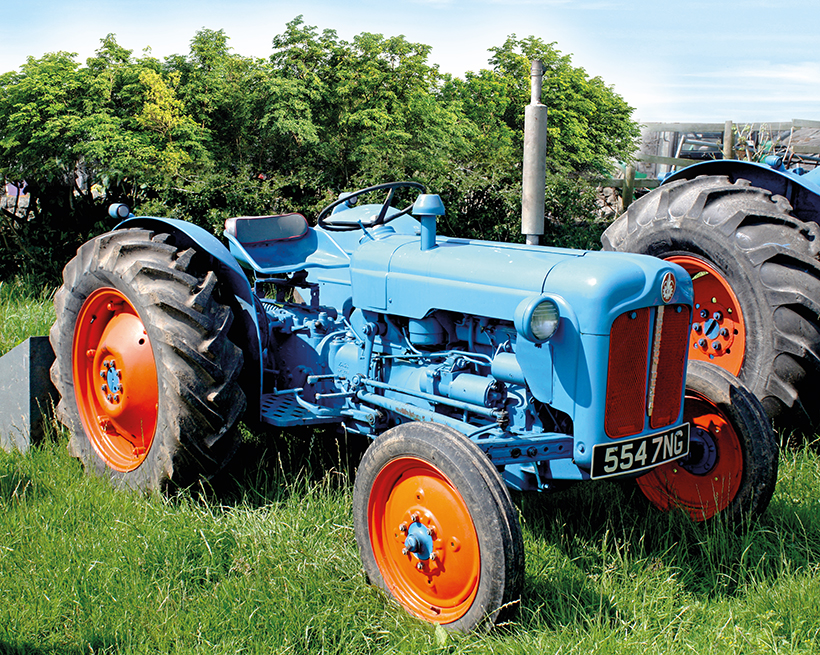
A typical example of a Fordson Dexta that’s been restored to a reasonable standard in the past. Buying a renovated example is easier than trying to do a full restoration yourself, especially if you’re inexperienced. The Dexta’s small size and low weight make it ideal for someone with limited storage space.
With the new Qualitrol draft control three-point linkage, the Dexta was the ideal machine to compete with what became the Massey Ferguson 35 in the same year. It was built at Ford’s huge Dagenham factory, became an instant sales success and was upgraded in 1960. The larger Super Dexta followed in 1962.
The small size and obvious lightness of the Dexta are huge plus points enabling this model to be stored in a domestic garage and transported easily on a small trailer. It’s also a mechanically simple machine, is straightforward to work on and spare parts are still readily available. So the Fordson Dexta is a highly recommended tractor for the first-time buyer.
Ferguson TE-20
It’s safe to say that you can’t go far wrong with a Ferguson TE-20 as a first-time tractor buy. The ‘Little Grey Fergie’ remains in plentiful supply, is reasonably affordable and is both small and light enough to be an easy machine to use, maintain and store.
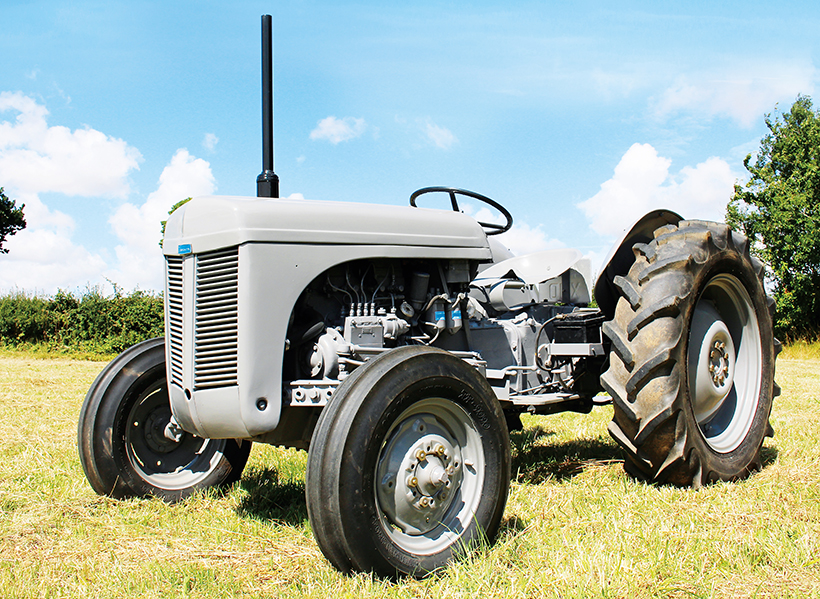
Originally, the petrol-powered TE-20 and TE-A 20 models would have been the simple choice with this Coventry-built tractor but, in the modern era, the diesel-powered TE-F 20 is probably a better bet for a beginner. But, with its simple overall design, any version of the Ferguson TE-20 will be hard to beat as a first-time buy.
Originally introduced in 1946 and built in Coventry, the model was initially powered by a four-cylinder petrol engine, then vaporising oil- and lamp oil-burning variants followed and, in 1951, the diesel-powered TE-F 20 model arrived.
Powered by a four-cylinder Standard Motor Company engine, the TE-F 20 represents the best model for a beginner. The Ferguson System three-point linkage and hydraulic draft control was the famous means by which these little tractors managed to accomplish so many big tasks around the farm, and the set-up is simple enough for anyone to get to grips with.
The tractor’s design – with liftable, hinged single-piece bonnet to ease servicing work – make the TE-20 an ideal first tractor. The model’s simplicity was its big selling point, and that a massive advantage today.
Most problems encountered when buying can be easily rectified given the good availability of spare parts and the straightforward mechanics. What’s more, the tractor is light enough to be easily transportable to shows and events.
Massey Ferguson 35
As with the Ferguson TE-20, the Massey Ferguson 35 also represents an extremely attractive option for the first-time buyer. It’s relatively small, compact and uncomplicated, so easy to maintain. It was developed from the American version of the TE-20 – the TO-20 – and entered production in 1956 as the Ferguson FE 35 in grey and gold paint, before being renamed the Massey Ferguson 35 at the end of 1957, with new red and grey livery.
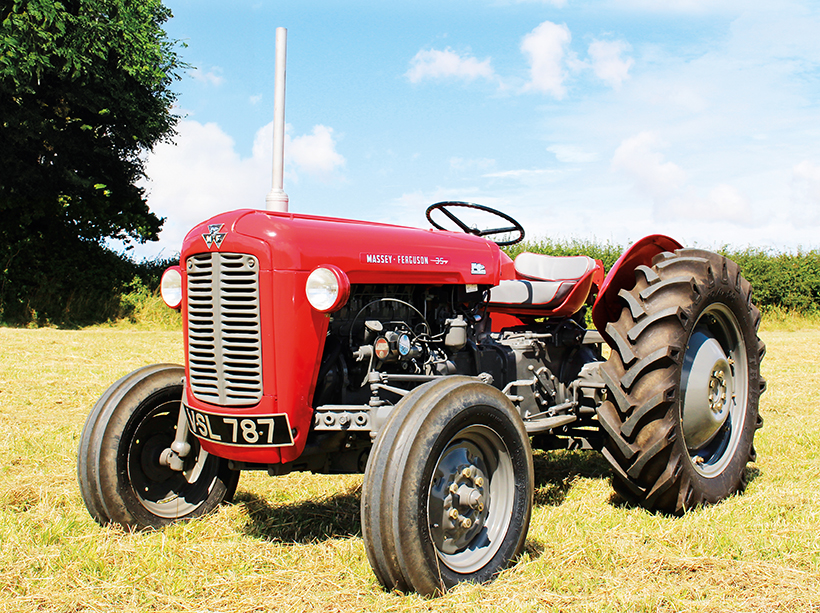
During the late 1950s and early ‘60s, the Massey Ferguson 35 reigned supreme as one of Britain’s most popular tractors, dominating the smaller, lighter tractor market. Today it makes the ideal tractor for a beginner, with the Perkins three-cylinder-engined version probably the best option.
The original Standard Motor Company four-cylinder diesel engine was replaced by a three-cylinder Perkins unit in 1959 then, in 1962, a more powerful deluxe 35X version arrived.
All three are good tractors but the later, Perkins-powered models are the best. The big problem with the Standard diesel engine is its cold starting performance although, once running, it’s a reasonably reliable power unit.
The hydraulic system – being based on the Ferguson design – is unrivalled, not only for ease of use but performance, too. A Multi-Power gear splitter, which doubled the number of gears, was an additional option.
The 35 was a very popular machine that went on to evolve into the MF 135 in 1964, although that model is a good deal more expensive today. The MF 35 is a very sensible, reliable and usable option.
Massey Ferguson 390
The 300 Series tractors, introduced in 1986, were designed to be simple with a basic and robust specification for a world market. Most for British customers were fitted with cabs and, in the early 1990s, a more modern version arrived with successive updates following during the decade.

The Massey Ferguson 390 is an excellent tractor with light weight and compactness on its side as well as plenty of power and a very reliable drivetrain. Maintenance is easy and parts are still readily available, making it an ideal beginner’s machine – providing you can find one!
Built in Coventry as a replacement for the successful 200 Series, the 300 Series range included small and larger models available with specifications including shuttle-type transmissions, making them ideal for loader work. Low-profile and standard height cabs were offered, although both straddle the transmission hump – a flat floor wasn’t available.
The MF 390 was one of the best-selling models, extremely versatile and very capable. It was powered by a bulletproof four-cylinder Perkins engine coupled to solid and reliable transmissions. The Hi-Line cab is the most comfortable, but the Lo Profile version isn’t too bad and noise levels are acceptable.
The simplicity and ruggedness of the 390 makes it perfect for the first-time tractor buyer who wants a machine of this size, and it’s by no means a heavy tractor, either. The model can take a lot of abuse and parts are still readily available to fix any issues. The biggest problem is finding one at an affordable price. A great many have been exported during the past 20 years.
John Deere 2140
First seen in 1979, the Mannheim-built 40 Series tractors from John Deere followed the larger American-built machines introduced two years earlier. The 2140 was the mid-sized offering and the top spec version boasted the new SG2 cab with its wrap-around glass and high level of comfort. The added benefit of the Power Synchron 16-speed splitter gearbox made the 2140 easy to operate.
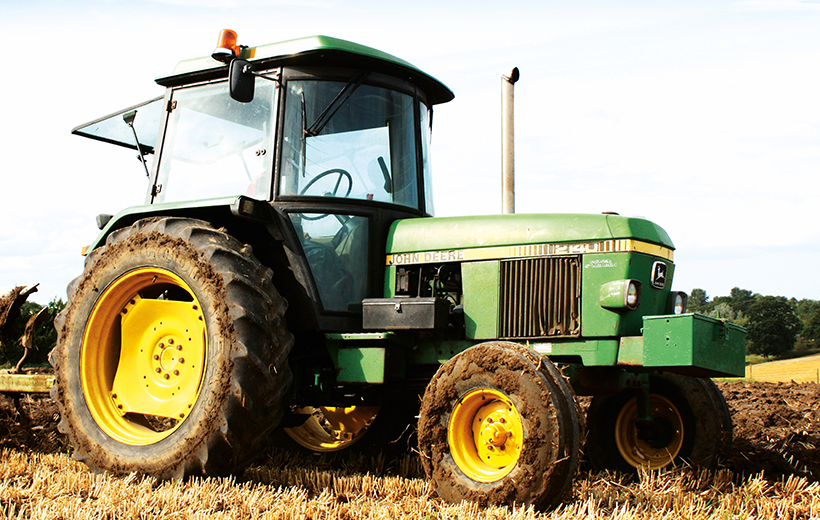
A two-wheel drive version of the John Deere 2140 can represent a superb first-time tractor option, with the SG2 cab being a luxury bonus. Although small, the 2140 is also a powerful performer and can often punch well above its weight.
With a lively, four-cylinder, 90hp turbocharged engine, this model is a highly regarded machine that boasts excellent reliability and good reputation overall. Available in either two- or four-wheel drive, the 2140 would be a smart choice for a beginner as it’s compact, powerful and sophisticated. Most parts are still available and the driveline is very reliable, assuming proper care and attention.
A cheaper, OPU cab was often fitted to the 2140, supplied by Sekura, making the model more affordable, but it doesn’t offer the same ease of operation – or the looks! – provided by the top-of-the-range SG2.
International Harvester B275
During the 1950s, International Harvester in Britain was keen to produce a tractor to rival the offerings from Ferguson and, in 1956, it launched the B250. This evolved into the slightly more powerful B275 in 1958, and both models were produced side-by-side at the company’s Bradford factory.
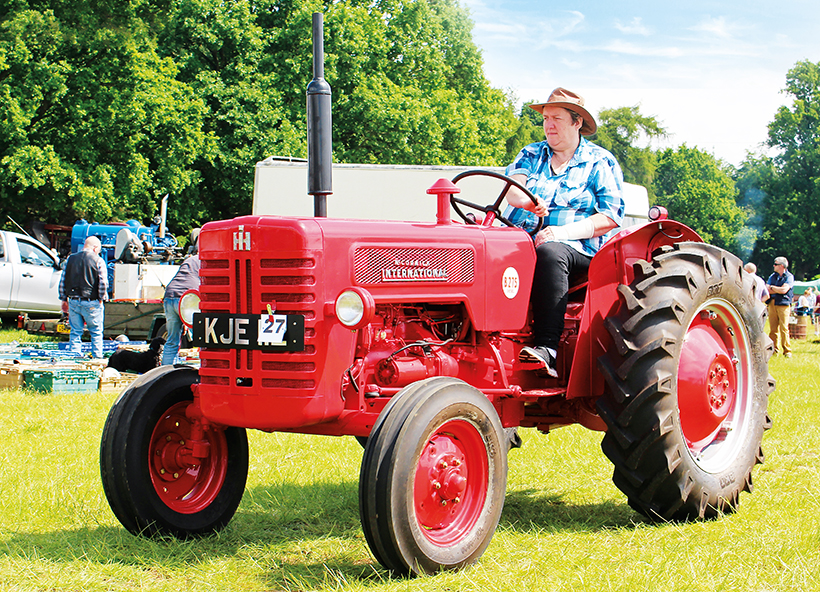
An International Harvester B275 on display at a rally; a sight that’s very common all over the country. These little tractors are extremely reliable and simple to maintain and, when you factor in their affordability and good availability, they make an excellent first tractor option.
The B275 built on the B250’s excellent reputation and sold well, although it never seemed as well-equipped as the competition. But this shouldn’t detract from the excellent reliability of its four-cylinder engine and superb transmission. The result was a sturdy, small tractor that sold incredibly well.
The B275’s good points certainly outweigh any negatives. It’s a perfect small, lightweight tractor that’s convenient to store, reliable, simple to operate and straightforward to maintain.
The model’s popularity can be gauged by the number seen at rallies, where they sometimes even rival the Ferguson TE-20. It’s a popular model for competition ploughing, too.
Yes, despite all the advantages, the B275 isn’t an expensive machine to buy, and prices simply don’t reflect what a nice tractor this truly is. An excellent choice for the first-timer.
David Brown 885
There are many great David Brown tractors that could to be included here, but I’m opting for one that is all too often overlooked. The 885 is a superb, 48hp machine that punches well above its weight, both in terms of performance and looks. It’s a tractor that came into its own after the takeover of David Brown by Case, and sold in large numbers.
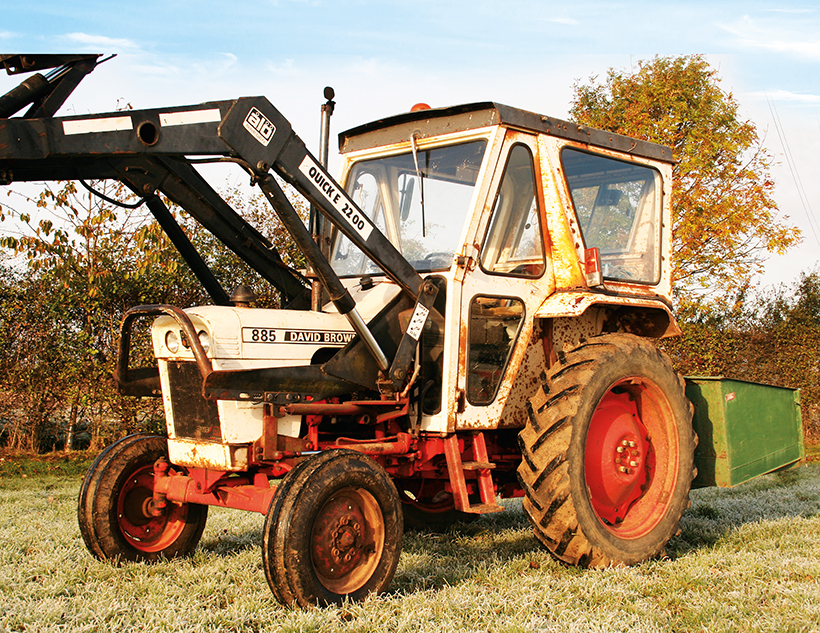
Often fitted with a front loader, the David Brown 885 was a true all-rounder that often belied its 47hp by performing well at tasks that normally needed a larger machine. Mechanically very reliable, the firm’s own cab with very narrow doors didn’t help ease of access and not all the controls were laid out in an intuitive manner. Even so, this remains is a superb tractor that can be bought for a very reasonable amount given its potential.
Fitted with a bombproof three-cylinder engine built in-house by the Huddersfield-based company, the 885 was usually equipped with the firm’s own safety cab. A quiet cab version followed but, although practical, narrow doors can make getting in and out a struggle. However, the tractor is very pleasant to drive, offering a high level of sophistication thanks to the Selectamatic hydraulic system and rugged transmission.
Being a small tractor, the 885 can be transported quite easily and simple mechanicals ensure it’s easy to service and maintain. Good general availability means prices remain more affordable than the corresponding Massey Ferguson and Ford models, yet owners aren’t short-changed in terms of benefits.
There aren’t many downsides to the 885; all you have to do is find a decent example – many led very hard working lives!
Leyland 272
British Leyland was formed from a merger between British commercial vehicle firms that included BMC, the builders of the Nuffield tractor that had recently moved its home from the Midlands to Bathgate, in Scotland, during the 1960s. This led to the orange Nuffield tractors being rebranded as the blue Leyland range in 1969. In 1972 a whole range of new models arrived, from three-cylinder to six-cylinder machines; but one of the most popular was the four-cylinder 272.
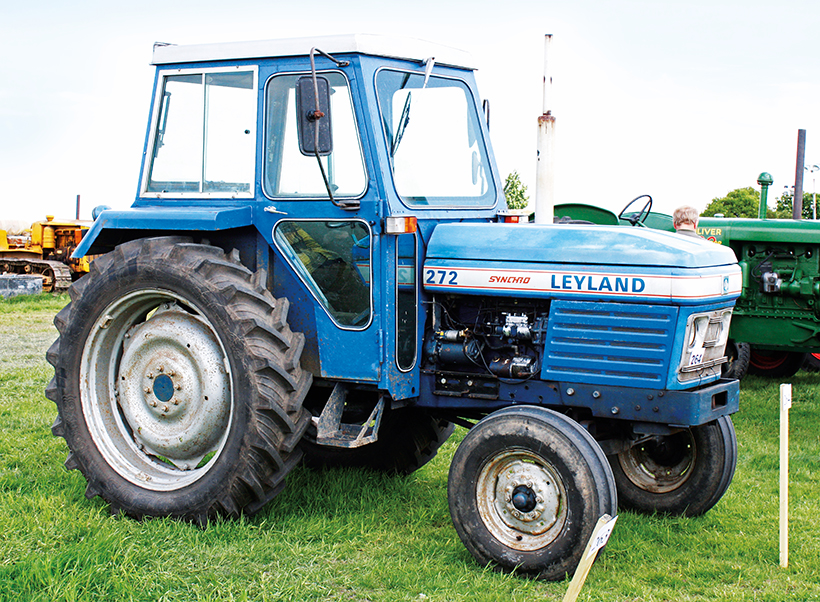
The 2WD version of the Leyland 72hp tractor – the 272 – is a great choice. It’s simple, has bombproof mechanical units, superb features (especially the Synchro version), and is very easy to maintain. Even good examples rarely command the high prices of similar makes, although 4WD 472 versions do attract more attention and greater value.
This 2WD, 72hp machine featured the excellent Leyland 4/98 engine; perhaps one of the best and most rugged of tractor power units. A 10-speed transmission offered practical versatility and the original Victor weather cab was modified in 1976 to become a ‘quiet cab’. A big upgrade arrived in 1978 with the advent of the Synchro version, with nine-speed transmission offering market-leading change smoothness.
A 4WD version, called the 472, was soon added and increased the popularity of the range. The bonnet design was very well thought out, with the top section being hinged and giving unhindered access to the top of the engine, fuel tank and radiator. The battery was easily accessed behind removable side panels and, in many ways, the Leyland was one of the most user-friendly designs of its time.
Combining the rugged nature of the engine and driveline with this tractor’s simplicity makes the 272 a particularly great choice for first-timers. Although most around these days will have led a hard life, most of the parts needed to bring them back to scratch can be sourced easily.
This feature comes from the latest issue of Tractor & Machinery, and you can get a money-saving subscription to this magazine simply by clicking HERE
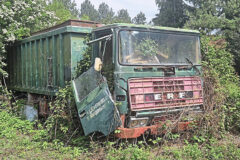
Previous Post
Unique and fascinating collection explored in East Anglia
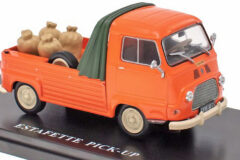
Next Post
Interesting, recently-released diecast models of tractors, trucks and vans



